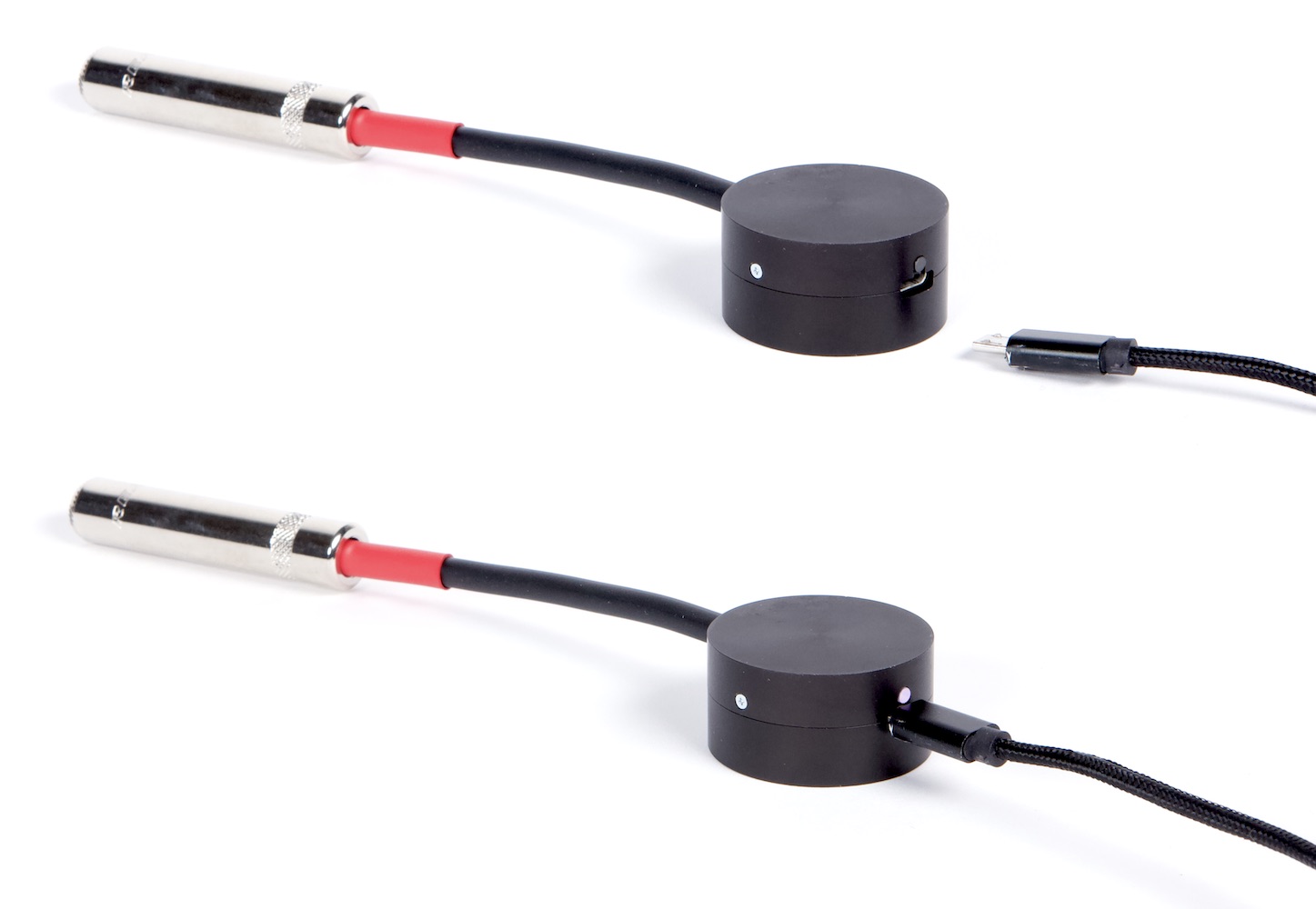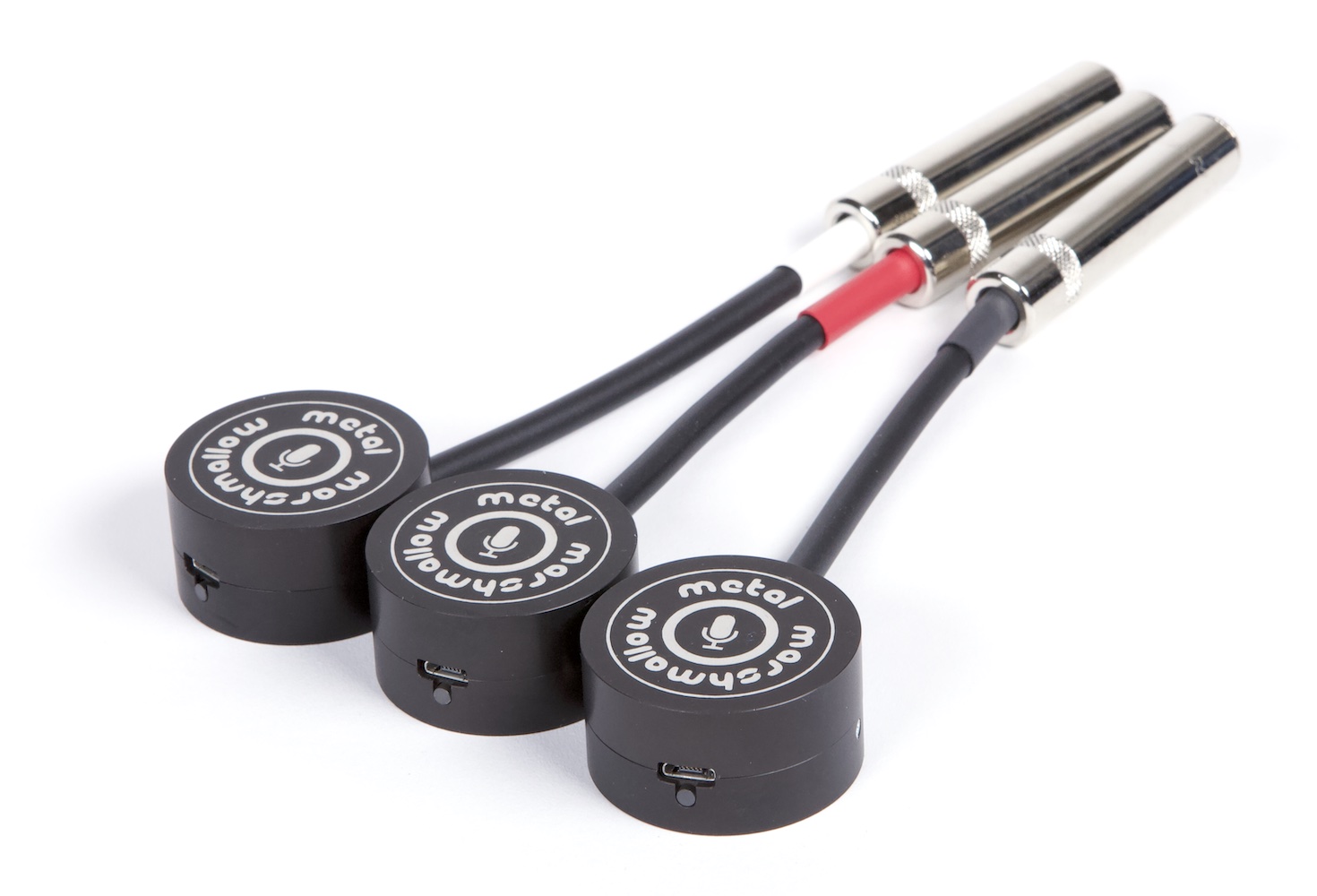



 Metal Marshmallow has a built-in rechargeable battery that powers its awesome preamp. It will ship with the battery drained. Prior to use you must charge it via a standard micro-usb charging cable. The charge-status light will come on when it starts to charge, and turn off when it is done charging. It takes about 1 hour to charge, and will last for at least 10 days of continuous operation. To reduce noise, Metal Marshmallow does not have a power switch; It is on all of the time until the battery drains. It is possible to use the microphone while it is charging but you may observe some extra noise at 16 kHz which can be filtered out. Please note that Metal Marhsmallow does not come with a charger or USB cable, you have to supply your own.
Metal Marshmallow has a built-in rechargeable battery that powers its awesome preamp. It will ship with the battery drained. Prior to use you must charge it via a standard micro-usb charging cable. The charge-status light will come on when it starts to charge, and turn off when it is done charging. It takes about 1 hour to charge, and will last for at least 10 days of continuous operation. To reduce noise, Metal Marshmallow does not have a power switch; It is on all of the time until the battery drains. It is possible to use the microphone while it is charging but you may observe some extra noise at 16 kHz which can be filtered out. Please note that Metal Marhsmallow does not come with a charger or USB cable, you have to supply your own.
| Metal Marshmallow | |
|---|---|
| Gain | 14dB (white), 24dB (red), 33dB (black) |
| Housing Color | Silver |
| Housing Material | Milled Aluminum |
| Housing Diameter | 39mm |
| Housing Height | 20mm |
| Battery Type | Rechargeable |
| Battery Life | 10 days |
| Recharge Time | ~1 Hour |
| Charge Indicator | White LED (on while charging, off when done) |
| Hum Protection | Built-In |
| USB Connector | For Charging Only |
| Audio Connector | 1/4" Female Unbalanced TS |

Marshmallow is available in a few different gain variaions. The standard model has red heat-shrink on the audio connector. This mic is good for most things and corresponds to the discontinued burnt marshmallow. There is additionally a low-gain variant with white heat-shrink that is better for recording loud sounds, like percussion, and this corresponds to the discontinued original marshmallow. Finally, there is a black heat-shrink model with high gain, that is good for recording very, very quiet sounds. If you watch closely, in the video above, you can see which variant I have used to record different things, which should give you a general idea of how they behave, although in many cases any of the mics would work just fine for a moderate sound source.
| Color | Gain | Decibles | |
|---|---|---|---|
| GREEN | 1.0x | +0 dB | |
| WHITE | 4.7x | +14 dB | |
| RED | 15x | +24 dB | |
| BLACK | 47x | +33 dB |

Hi, I'm Michael Krzyzaniak, creator of Marshmallow. While I was getting my PhD, I was building robots that played music. I needed the robots to listen to themselves while blocking out other sounds, so I thought I'd use a contact mic. Unfortunatly, due to questionable engineering, electromagenetic radiation spewed out of the robots' out of every pore. In retrospect, I was probably violating FCC regulations every time I turned it on, and people driving by probalby just heard "KSSSSHHHHHHH" on their radios. Needless to say I had considerable difficulty getting a clean signal through a contact mic; it was mostly hum. I ordered every single comercially available mic and built every DIY one I could find on the internet. None of them could withstand the hum, and furthermore, most had very poor bass response, making them unsuitable for the spectral analysis I was doing in my research. So I went on a quest to design a contact mic that could withstand massive hum and had good bass response, so I could complete my dissertation. The result is Marshmallow. It is the best contact Mic I have heard, so I decided to share it!
Please contact me with any questions or concerns at michael.krzyzaniak@yahoo.com